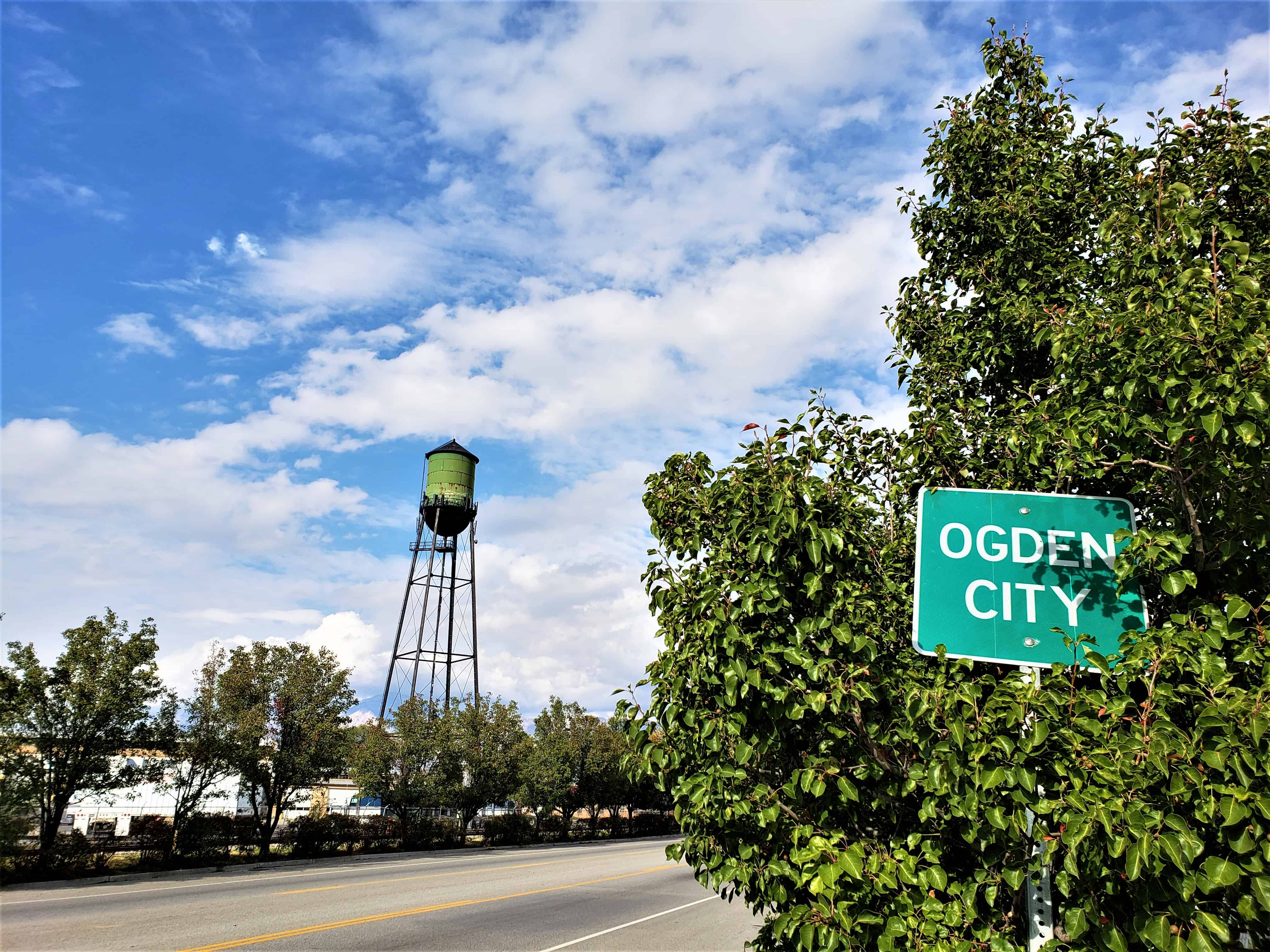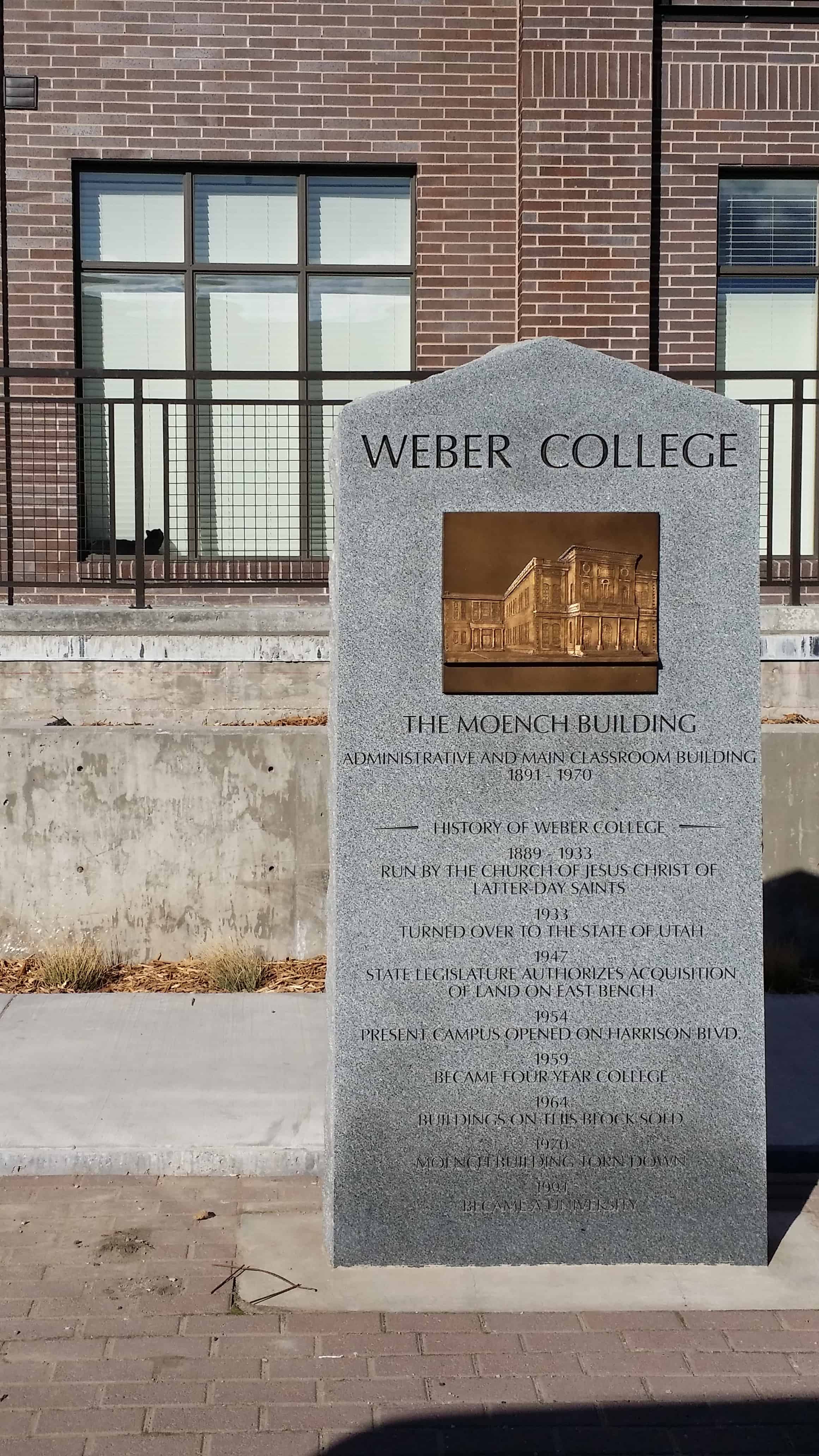Tags

Miles Goodyear, the first European-American settler to the Ogden area, built Fort Buenaventura as a fur trading post in 1845. The Mormons arrived in Utah in 1847 and immediately began establishing settlements in promising locations, including Ogden. The general conference of the Church of Jesus Christ of Latter-day Saints (Mormon or LDS church) voted in 1850 to create a permanent city on the site, naming it Ogden after Peter Skene Ogden, a fur trapper who had been in the Ogden Valley in 1825.

The city was laid out in a formal grid pattern typical of Mormon communities in Utah. Although Ogden was to remain a predominantly agricultural community, settlers were encouraged to build houses on the city lots along with permanent public buildings. Lorin Farr was Ogden’s ecclesiastical leader and first mayor. The population in Ogden grew slowly from about 1,100 in 1850 to about 1,500 in 1860.

Ogden’s Historic Homes:
Ogden’s Historic Buildings:
- Ben Lomond Hotel
- Bertha Eccles Hall / James C. Armstrong Home
- Episcopal Church of the Good Shepherd
- James V. Hansen Federal Building Ogden
- The Kay Block
- LDS Temple and Tabernacle Historic Marker
- Libraries – Carnegie and Weber County Main
- Ogden Eccles Conference Center
- Ogden High School
- Peery’s Egyptian Theater
- Pioneer Fire Station
- Swift Building
- Union Station
- Weber County Daughters of Utah Pioneers Museum
Other Ogden Posts:
- 25th Street
- Bingham’s Fort
- Captain James Brown
- Christopher “Kit” Carson
- Fallen Police Officers
- First Grist Mill in Weber County
- Fort Buena Ventura
- Historic Homes in Ogden
- Hof, Germany – Ogden, Utah – Sister Cities
- The Jefferson Avenue Historic District
- Lorin Farr
- North Ogden and North Ogden Historic Marker
- Ogden Canyon Toll Gate
- Ogden City Wall
- Ogden’s Central Bench Historic District
- Parks in Ogden
- Peter Skene Ogden
- Pioneer Forts in and near Ogden, Utah
- Pioneer Tabernacle
- Settlement of Lynne
- Site of Mound Fort
- South Ogden
- The Stump
- Trail to Pioneer Days Horses
- Other Ogden Posts, sorted by address









The Union Pacific Railroad Company built a railroad through Ogden in 1869 as part of the first transcontinental railroad, which was completed in 1869 at Promontory, approximately 30 miles west of Ogden. Once the Union Pacific and Central Pacific railroads joined, Ogden was chosen as the ideal
intersection for east-west railroads. Although Corrine, north of Ogden, was a better site geographically for the junction of the north-south lines, Ogden was chosen due to political and financial maneuvering by the LDS church. By 1878, Ogden was recognized as the “Junction City” of the intermountain west, with most passengers and freight traveling through the area stopping there.

Despite common belief, the railroad did not immediately change Ogden’s landscape and population. Even by 1876, seven years after the coming of the railroad, Ogden was still a small-scale town of primarily frame buildings. Ogden began to expand rapidly in the late 1880s and early 1890s; most of this expansion was due to the railroads which had both freight and passenger lines. The population grew from about 3,127 in 1870 to 6,069 in 1880, and soared to 12,889 by 1890.

With the increased railroad activity, due to Ogden’s status as a regional transportation hub, came non Mormons (“gentiles” as they were called). This influx changed Ogden forever by bringing a diversity of religious and political beliefs. Ogden was fought over politically by Mormon and gentile groups such as the People’s party and the Liberal party. By 1889, as a result of a growing non-Mormon population and political disenfranchisement of polygamous Mormons , the anti-Mormon Liberal party took control of
Ogden’s municipal government by winning every city office. One visible change made by this new government was the renaming of the north-south street for U.S. presidents, Jefferson Avenue among them. Many members of the controlling body that made up Ogden’s local government over the years
lived in the Jefferson Avenue District.

In addition to all of the political changes occurring during this time period, Ogden’s means of financial growth was changing. Due to the railroad, Ogden was no longer a small agricultural community, “inland town,” but a major city of commerce and trade to outside areas.5 By 1889 there were such industries as woolen mills, a broom factory, a vinegar works, an iron works, and three breweries. Many of these businesses, such as flour milling began as pioneer industries. By 1900, many local flour mills were consolidated with David Eccles’ Ogden Milling Company which used wheat that came from local farmers. Lumberyards and sawmills also added to Ogden’s growth. Again, David Eccles was involved, with his Eccles Lumber Company doing $100,000 in business annually by 1888.6 Ogden’s canning and sugar industries also began during this period, and of course, with all of the railroad traffic, there was a need for hotels of which Ogden provided many.

As businesses expanded, so did the rest of the city’s functions and services. Telephones were added, the telegraph system was expanded, a hospital was established, roads were paved, sidewalks installed, and electricity provided. Permanent schools and churches were also built.

Ogden’s total population in 1910 was 25,580. Approximately 3,900 people worked for the railroads in 1915. By participating in railroad related industries, many of Ogden’ s leading entrepreneurs became wealthy. Many average workers also earned their living working in the same businesses. For example, sugar companies employed about 1,500 people, and mercantile houses employed about 1,100 workers. Much of Ogden’s wealth also resulted from the livestock industry. Ogden’s railroad business surged during World War I and continued its prosperity and growth in the 1920s. The agriculture industry, however, did not fare so well. Like the rest of the country, Ogden was hit hard by the Great Depression of the 1930s. During this time, passenger and freighting business declined and many of Ogden’s major industries suffered or went out of business completely. In general, railroad workers with seniority continued working during the Depression, but part-time workers often lost their jobs.

Today, Ogden remains a relatively healthy and prosperous city, but its condition has little to do with the railroad. Many of the old railroad tracks and structures such as roundhouses, have been destroyed.














Pingback: 2044 Harrison Blvd | JacobBarlow.com
Pingback: 1185 Rushton St | JacobBarlow.com